Storage crates form plinths for sculptures inside Microscape's Tuscan church conversion
Plaster sculptures are displayed on wooden pallets inside this ancient Tuscan church, which has been converted into a gallery by Italian practice Microscape (+ slideshow).
The collection of 230 figurative sculptures, dating from the mid-19th to the mid-20th century, is displayed on shelving units made from a combination of metal tubes and wooden pallet boards.
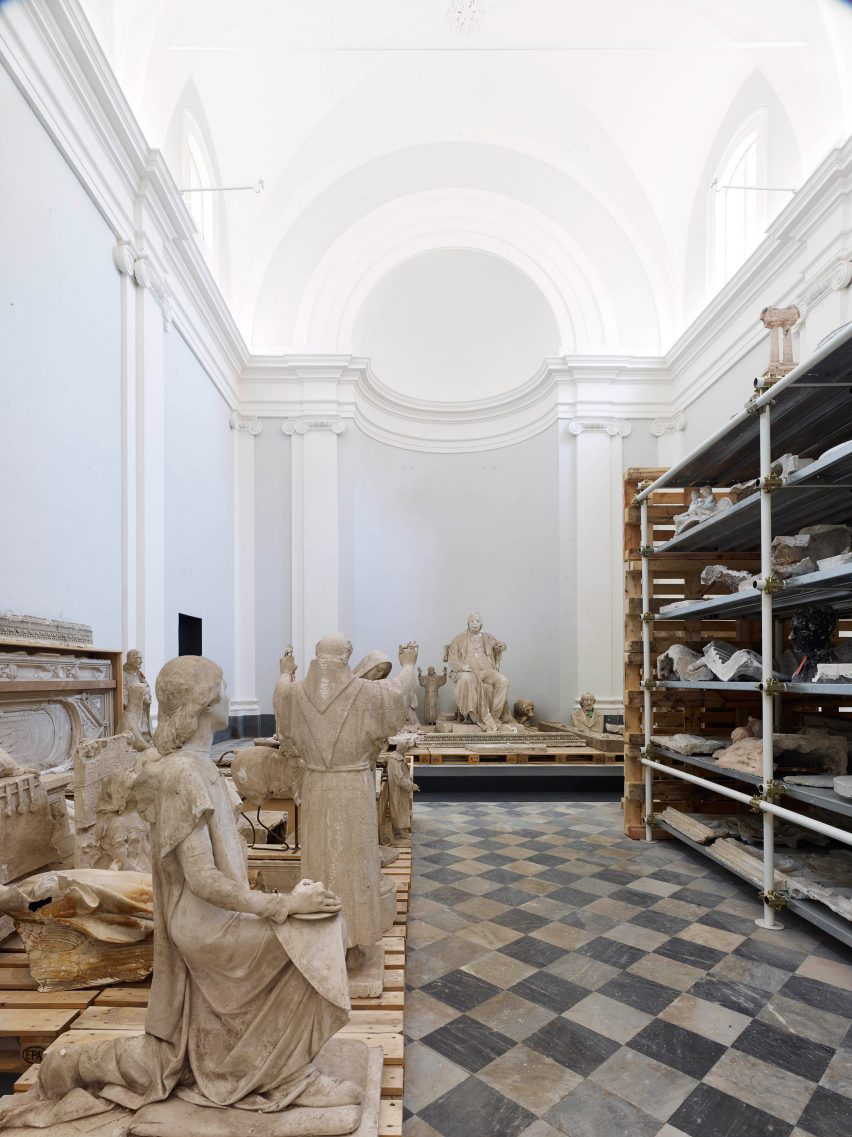
The sculptures come from the museum Polo Museale della Toscana, and the wooden storage crates give the sense that the exhibition space is being unpacked from storage.
Microscape created the display stands for the 310-square-metre exhibition within the former San Pellegrino Church in the city of Lucca.
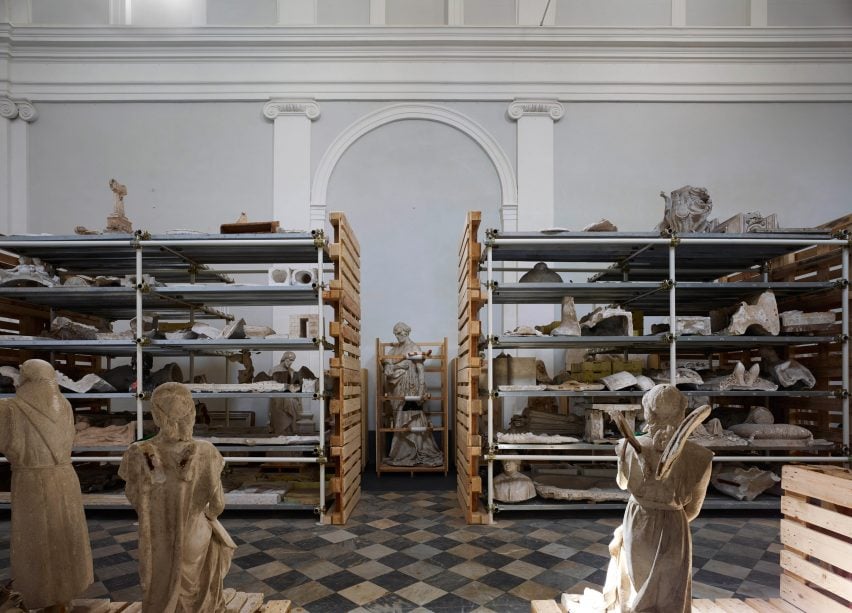
"The church was in an advanced state of neglect," said the studio. "The objective set by the commission was to restore the exterior, the roofs and interiors with the intent of transferring the plaster cast collections from the Polo Museale Toscano."
"It's a low-cost project with utmost respect for the historical artefact," it continued. "The space has been restored to its former splendour, and artificial lighting has been created with equipment placed on the hall cornice in order to hide any technological elements from view."
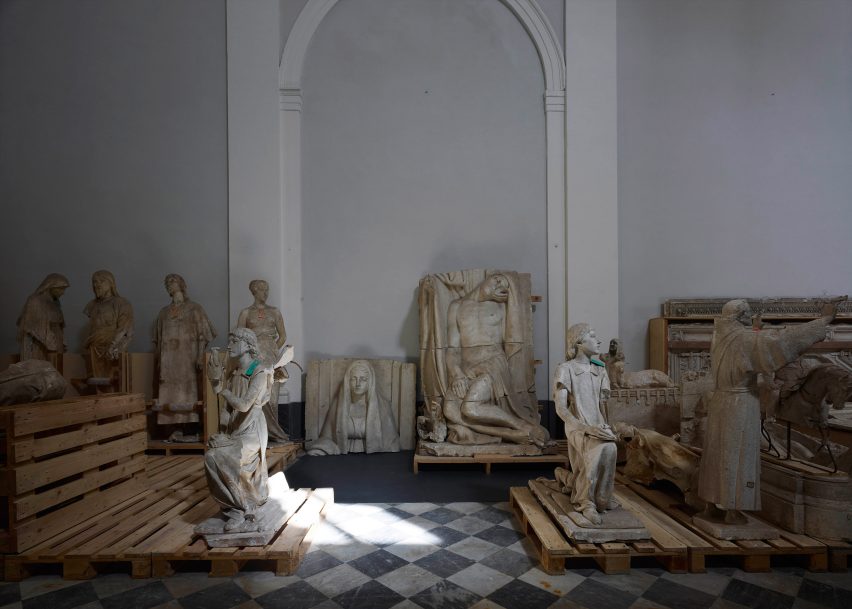
The exhibition area is visible from the street through the glazed entrance, so Microscape wanted to integrate graffiti-like signage into the display units.
Multilingual text is printed on the side of one unit, and is intended as a "visual metaphor for the universality of art."
The church is believed to have been built as a secret entrance to Roman forts and was expanded in the middle of the 17th century to include a large vaulted hall – the primary exhibition space.
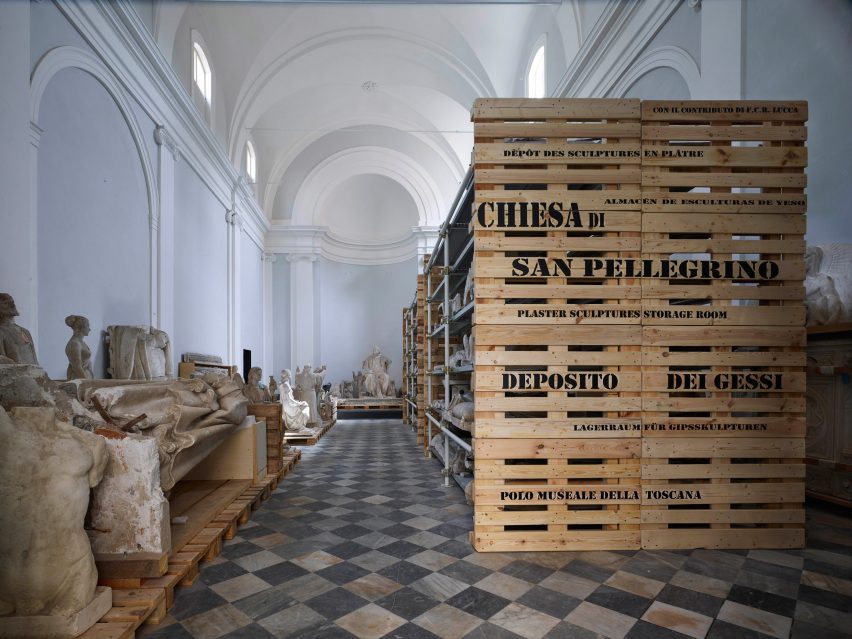
It closed for worship in 1808 and was used as an organ workshop and a warehouse in the 20th century prior to its conversation into the gallery.
The architects have preserved the original chequerboard floor, which is made from pieces of black and white marble, and protected it against further wear.
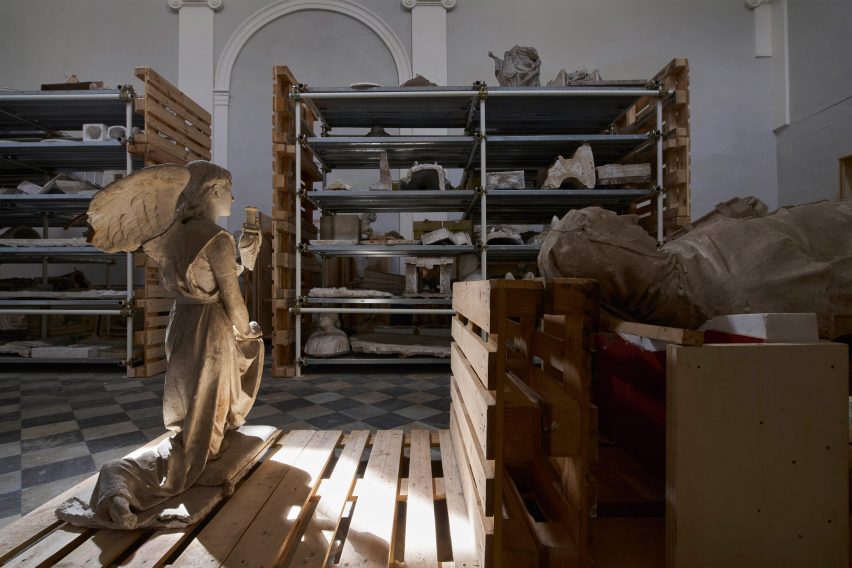
To highlight renovated areas, they used a series of black, powder-coated steel plates. These form the frame for a door connecting the hall with auxiliary rooms, including an office and form missing steps.
"The material of the architectural finishes combined with the linearity of such a traditional space makes for a very contemporary feel," said the architects.
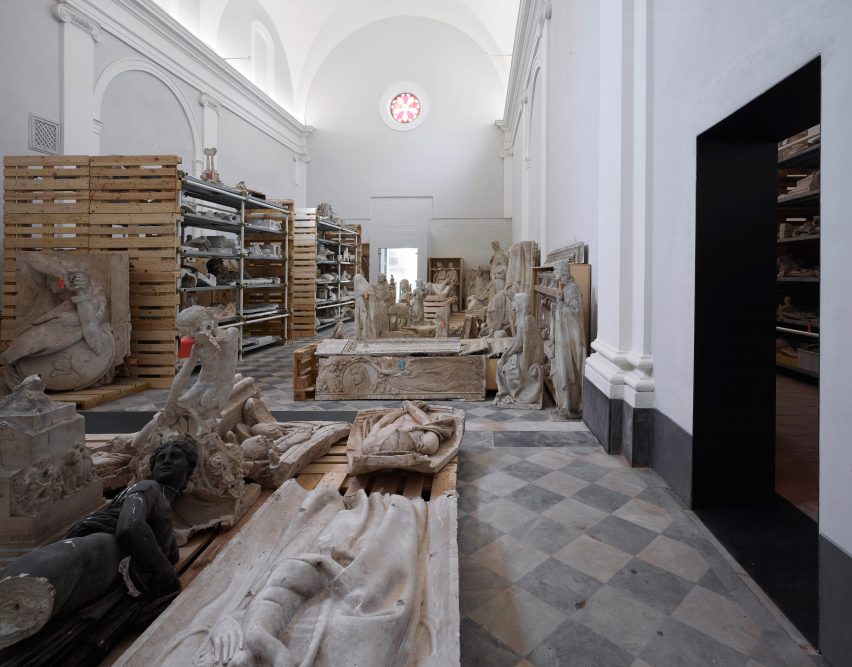
Special attention has been given to the lighting of the sculptures, with artificial lamps sensitively hidden behind the church's period detailing.
Wooden pallets, which are shaped from planks to allow goods to be transported via forklift, are frequently used as a low-cost building material by architects and designers.
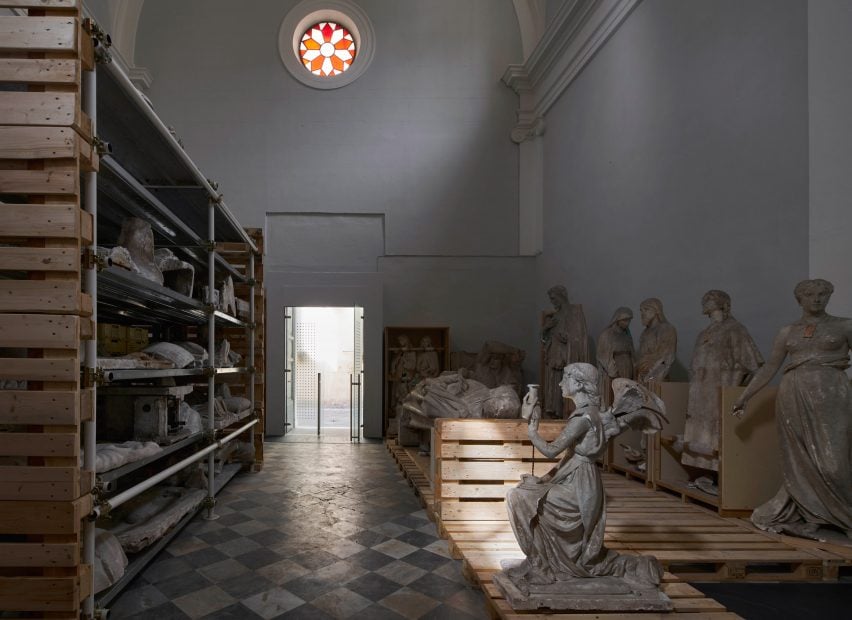
Hiroki Tominaga Atelier broke down over 100 of these transport boxes to create the floorboards, wall coverings and furniture for a temporary office space in Tokyo, while Berlin-based designer Daniel Becker upcycled pallets to form his 45 Series furniture collection.
Photography is by Pietro Savorelli.
Project credits:
Architectural design, restoration and outfitting: Microscape Architecture Urban Design AA
Safety: Microscape Architecture Urban Design AA
Client: Saint Michele, Paolino and Alessandro Parish
Work supervision: Microscape Architecture Urban Design AA
Contractor: Lorenzini Pietro, Moretti Restauri, S2, Tarchiani, Tecno Service.